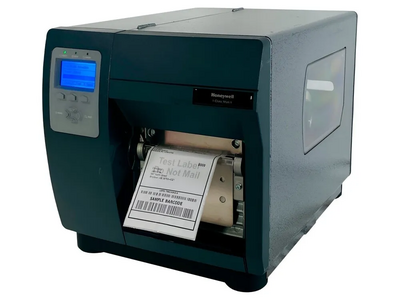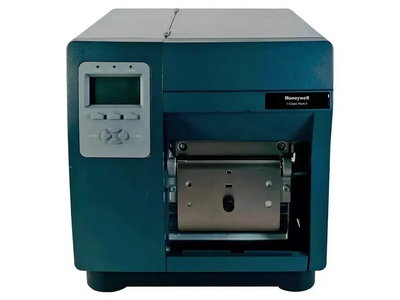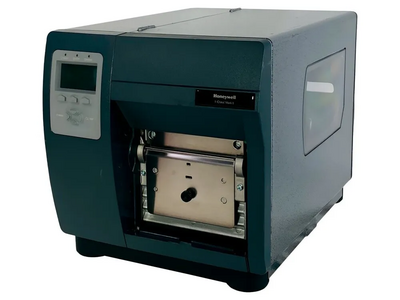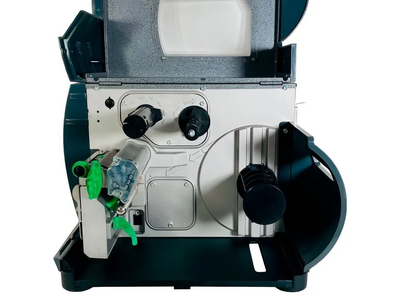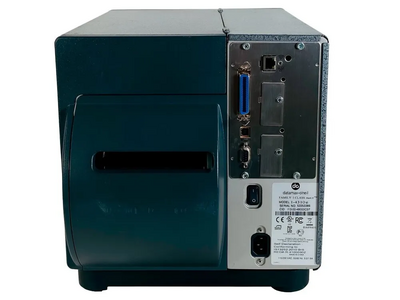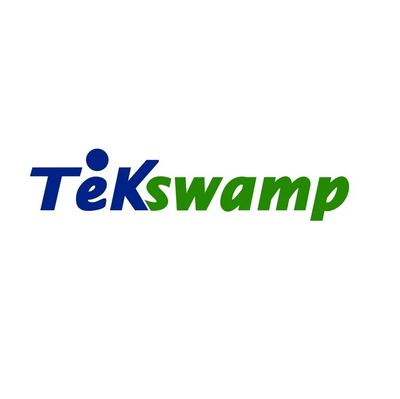
Datamax I-4310e
| Brand | Datamax 2004 |
| Model | Industrial, DMX-I-4310e, I-Class, Barcode, Parallel, Honeywell, Mark II, Ethernet, I13-00-48000C07 |
| Released Year | 2004 |
| Type | Printers |
| Series | I-Class |
| Status | Discontinued |
Quick view
Overview
The Datamax I-4310e is an industrial-grade printer designed primarily for high-volume barcode label printing in manufacturing and warehousing environments. It features a robust metal chassis to endure heavy-duty use and offers a print width of up to 4 inches with resolutions typically at 203 dpi for crisp barcode clarity. Connectivity options include parallel interface and Ethernet, enabling flexible integration into existing systems. The printer utilizes direct thermal and thermal transfer printing technologies allowing versatility depending on label material and application. It supports a range of media types and sizes, facilitated by adjustable media sensors and a 300-meter ribbon capacity for extended print runs. The device incorporates a Mark II print mechanism known for reliability and ease of maintenance in industrial conditions.
Advanced firmware in the I-4310e supports multiple barcode symbologies and scalable fonts, making it adaptable for diverse labeling standards. The printer is compatible with the DMX-I-4310e model variant which integrates enhanced networking features for efficient remote management. Its Honeywell heritage ensures it benefits from established industrial design and rigorous quality controls in the I-Class series.
Specifications
| Input Type | Monochrome |
| Output Type | Black & White |
| Memory | 4 MB DRAM, 2 MB Flash memory |
| Custom Bundle | No |
| MPN | Industrial, DMX-I-4310e, I-Class, Barcode, Parallel, Honeywell, Mark II, Ethernet, I13-00-48000C07 |
| Supported Paper Size | Max Label Width: 4,65" |
| California Prop 65 Warning | This item does NOT contain any chemicals or materials specified in the California Prop 65 list. |
| Type | Label Printer |
| Printer Type | Label Printer |
| Technology | Thermal |
| Maximum Resolution | 300 x 300 DPI |
| Model | I-4310e |
| Connectivity | Ethernet (RJ-45), Parallel (IEEE 1284), USB 2.0, Serial (RS-232 DB25) |
| Features | Industrial |
| Black Print Speed | 10 ips |
| Product Line | I-Class |
| Print Technology | Direct thermal and thermal transfer |
| Resolution | 203 dpi (8 dots/mm) |
| Maximum Print Width | 4 inches (104 mm) |
| Maximum Print Speed | Up to 6 inches per second |
| Interfaces | Parallel, Ethernet |
| Media Types | Continuous, die-cut, black mark, fan-fold, tag stock |
| Media Width | 0.75 to 4.65 inches (19 to 118 mm) |
| Media Thickness | 0.0025 to 0.01 inches |
| Ribbon Length | Up to 300 meters |
| Dimensions | 12.8 x 10.2 x 15.2 inches (WxHxD) |
| Weight | Approx. 15 kg |
| Power Supply | 110-240 VAC auto-ranging |
| Operating Temperature | 5°C to 40°C |
| Print Mechanism | Mark II |
| Supported Barcodes | Code 39, Code 128, UPC, EAN, Interleaved 2 of 5, and more |
| Firmware | DMX-I series with multiple language support |
Images
Key Advantages
The Datamax I-4310e offers exceptional durability with its industrial metal housing suitable for harsh environments. It provides versatile connectivity including parallel and Ethernet interfaces to easily fit into existing production lines. The large ribbon capacity minimizes downtime, increasing operational efficiency. Print quality remains consistently high with reliable Mark II print mechanisms optimized for barcode clarity. Its support for multiple media types and easy-to-adjust sensors adds flexibility for various labeling needs. Firmware compatibility with diverse barcode formats enhances its adaptability across industries requiring precise labeling solutions.
Limitations
Being an older industrial printer introduced in the early 2000s, the I-4310e lacks modern wireless connectivity options such as Wi-Fi or Bluetooth. The standard print resolution of 203 dpi may not meet extremely high-definition print requirements in some applications. Its user interface and control panel are relatively basic compared to current touchscreen models, which could slow setup processes. Replacement parts and consumables may be harder to find due to limited production. The device consumes more power compared to newer, energy-efficient models. Software integration might require legacy drivers, limiting compatibility with newer operating systems.
FAQ
What printing technologies does the Datamax I-4310e support?
The Datamax I-4310e supports both direct thermal and thermal transfer printing technologies, allowing flexibility depending on label materials and durability needs.
What types of connectivity are available for the I-4310e?
Connectivity options include parallel interface and Ethernet, enabling integration in industrial networks and legacy systems.
Is the Datamax I-4310e still supported by the manufacturer?
No, the I-4310e has been discontinued and is no longer supported officially, though third-party parts and service providers may still assist.
What is the maximum print width of the I-4310e printer?
The maximum print width is 4 inches (approximately 104 mm), suitable for standard barcode labeling requirements.
Can the I-4310e handle large print jobs without frequent media replacement?
Yes, it supports large 300-meter ribbons which reduce interruptions during long print runs.
Does the I-4310e support modern barcode symbologies?
It supports a wide range of barcode symbologies standard for its time, suitable for most industrial labeling applications.
What are typical use cases for the Datamax I-4310e?
Common use cases include manufacturing line labeling, warehouse inventory tracking, shipping labels, and product identification.
Disclaimer
The content on is provided for general informational purposes only. We do not guarantee the accuracy, completeness, or reliability of any information, specifications, or visuals presented on the site.
is not responsible for any content, images, or data uploaded or shared by users. Users are solely responsible for the content they submit.
We may include links to third-party websites for convenience. We do not endorse or take responsibility for the content or policies of any external sites.
Use of the site is at your own risk. Always verify critical information independently before making decisions based on content from this website.

